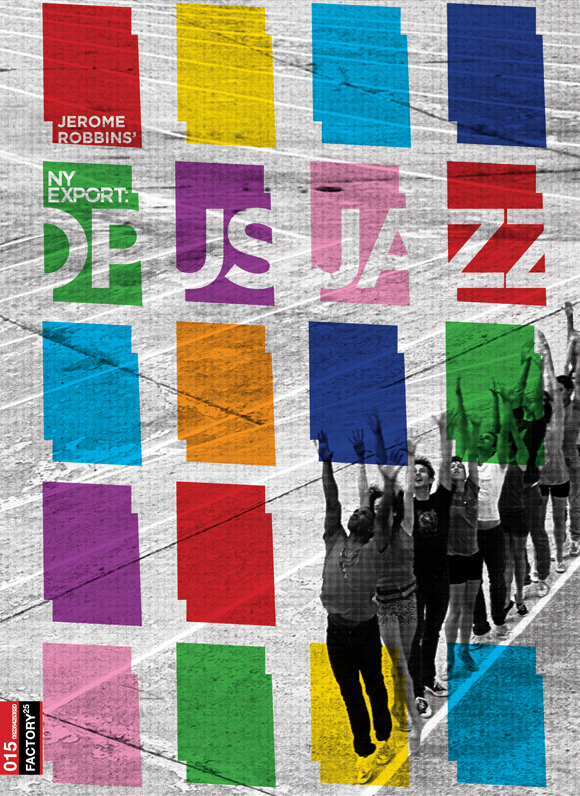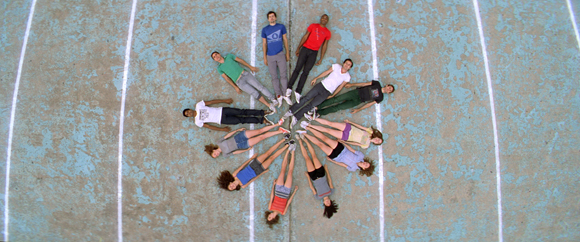NY Export: Opus Jazz

DVD Cover for Factory25's release of NY Export: Opus Jazz.

There is no other way to say it, this was the best film I saw this year. Try as I may to find a film better suited for this title I can’t. I’ve seen NY Export: Opus Jazz almost 20 times. I’ve stood outside theaters on multiple occasions where it was showing just to watch the audience’s enthusiastic reactions as they left the screening. I’ve shown it to everyone I know that will sit with me to watch it and the film never fails to take my breath away. When I watch this film tiny explosions go off in my mind. Sometimes it is a shot or series of shots for that matter, sometimes it is a cut, as in the case of the narrative bridges between the difference dance sequences, but at all times it is the film’s unashamed love for ballet that sweeps the floor.
Before this film I was essentially ignorant of Jerome Robbins’ life, but to be fair I was terribly familiar with his impressive contributions to film. I’ve seen and loved The King and I, Peter Pan, and Fiddler on the Roof, all brilliantly choreographed by Robbins. But had I never seen Opus Jazz I might have overlooked his accomplishments due to his most notorious cinematic achievement. The film, for which he was ultimately awarded an Academy Award for directing, was West Side Story. I’ve always held a grudge with it, ever since we were forced to view it in my seventh grade English class. I hated that movie and hated the class. Ever since then I had never thought to revisit it. A task set forth upon me by the filmmaking team behind Opus Jazz. I can safely say there are only two films with dance numbers that give me goosebumps, and those are NY Export: Opus Jazz and West Side Story.
How can a film with essentially no story, no studio, and no money become the achievement that it is? To put it simply, “care.” There is no one detail of the film that isn’t on the same level as the posthumous contribution of Jerome Robbins. From the perfect urban locations found over the years of pre-production, to the vibrant yet common wardrobe of today’s youth, to the visceral passion of the dancers, and to the commitment of the filmmakers in presenting the work, every aspect has it’s own artful place. This sounds epically cheese ball, but every second of movie is a glimpse into heart of the dancers and the filmmakers alike. In the same way that Robbins created this ballet in praise of youth, the film gives light to the criminally under seen art of this particular ballet.
Directors Henry Joost and Jody Lee Lipes team up with Editor Zac Stuart-Pontier to recreate the spirit and vision for dance in cinema that Jerome Robbins clearly had as evidenced by his directorial work on West Side Story. To say that their input simply maintains the level of focus Robbins had would be the truth if that statement were not so inadequate. The trio not only finds the angles and cuts that bring the movement and energy hurtling to life on the screen, but they impress their strengths deep into the inner workings of the film’s language. This enriches the material with a perspective that at once demands your attention but also respects and enhances the work of dancers on screen.

In one painfully physical sequence in a high school gym, the dancers seem to glide on the fronts of their toes. Yet the location of the gym provides this wonderful echo chamber that emphasizes the weight, strength, and momentum. With every step, pound and squeak the performance takes on another level of commitment. This piece is also the most entertaining as it tasks the dancers to evoke the struggle and playfulness of their young sexual desires. Who knew that ballet would be this much fun to watch? It makes you wonder why more of it isn’t performed in gyms and wearing sneakers.
We get this experience and others equally exciting in part because of Producers and NYCB Soloist Ellen Bar and Sean Suozzi who came up with the idea to make a film of this ballet on location throughout the New York City. As someone who has seen many films featuring on location dance through years of working in video art festivals, it isn’t that crazy original of an idea. The true testament of the work of these producers was their unwillingness to compromise their ambitions. This film took years to make, and it shows in every single frame. In 2010 I had assumed that films like this don’t exist anymore. Part way through the production of West Side Story the Producers pulled Robbins off the film, telling him essentially that he didn’t know how to make a movie. He won best picture for his work. NY Export: Opus Jazz deserves every and any award it can get. It is simply, utterly, unique in all of right ways.
I had originally written a review declaring similar praise in my SXSW 2010 coverage where it had it’s theatrical premier, but it was too soon to say what I wanted to say. It went on to win SXSW’s Emerging Visions Audience Award and later premiered on PBS’s Great Performances nationally. The film plays with a short documentary by Matt Wolf and Anna Farrell about the making of the film and Jerome Robbins. NY Export: Opus Jazz is currently available on DVD, it is the perfect stocking stuffer (and currently on my wishlist!) for the film lover or dance enthusiast in your family.